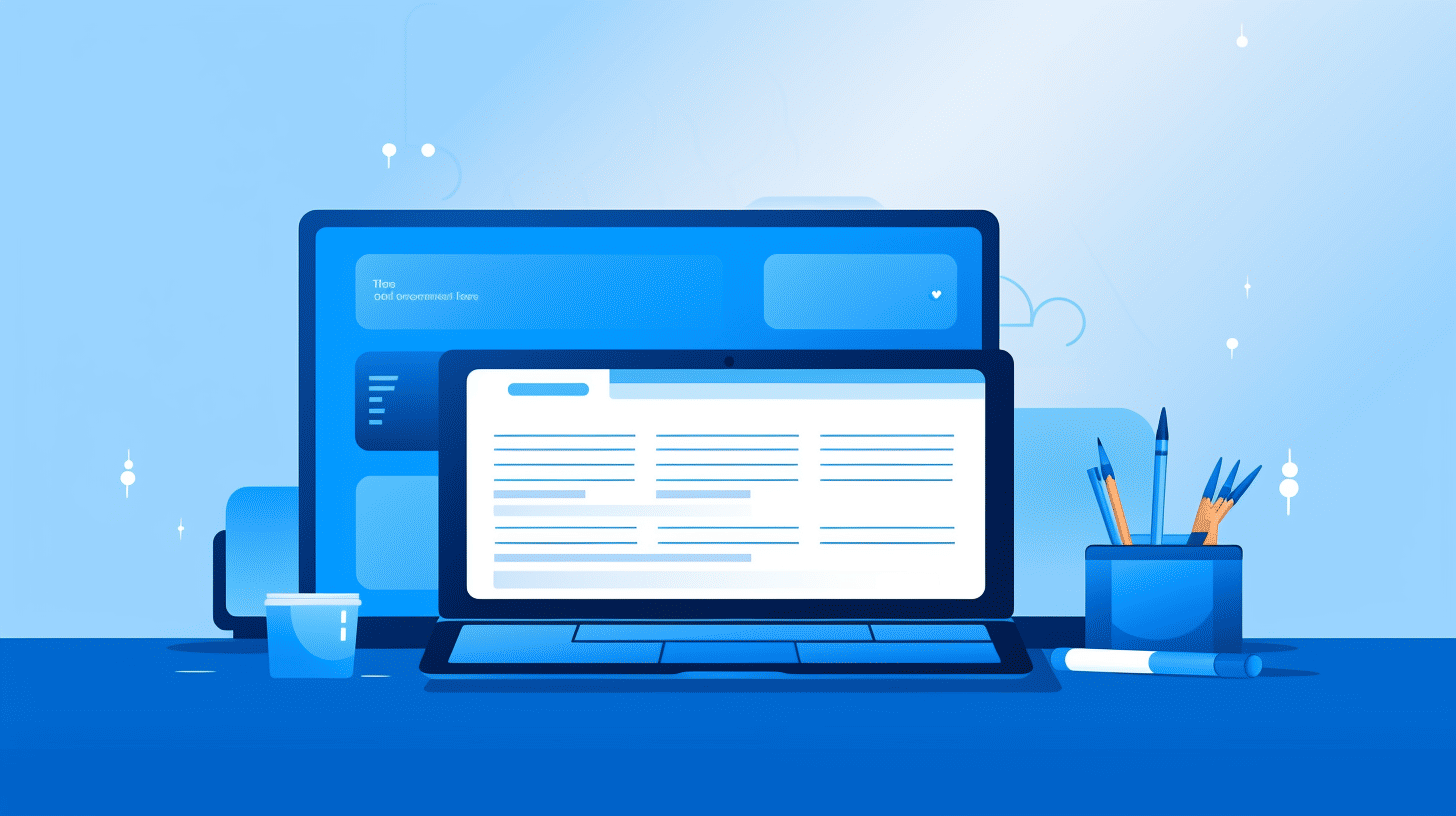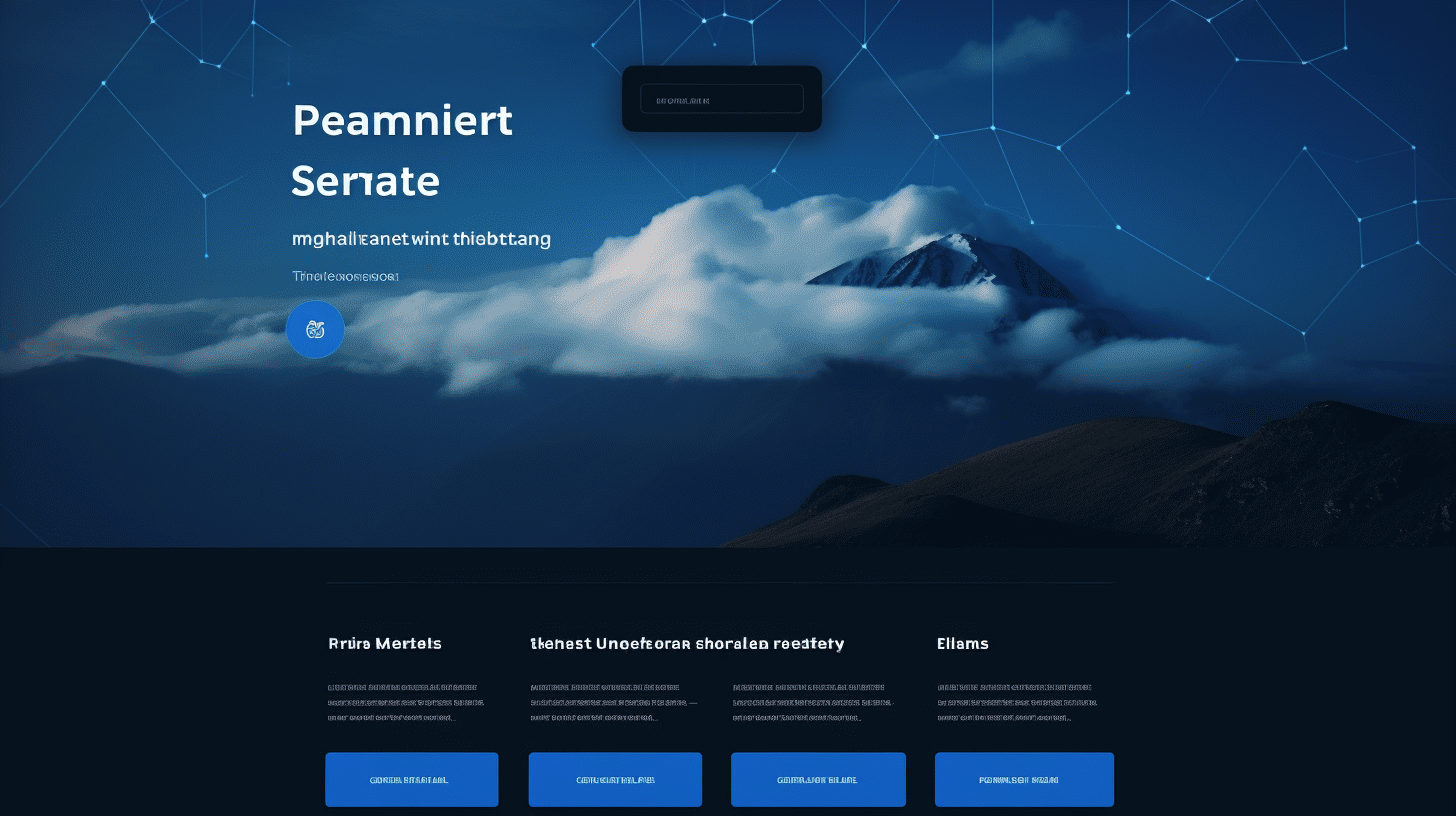在当今的数字时代,拥有一个维护良好的网站对于企业和个人都至关重要。仅仅建立一个漂亮的网站是不够的;它需要不断的关注和照顾,以确保它保持功能性、安全性和最新性。
网站维护通常是一项耗时且繁琐的任务,尤其是对于那些不懂技术的人来说。但是,使用正确的工具和技术,管理您的网站将变得轻而易举。
在本文中,我们将探索 WordPress 维护的世界,并为您提供有价值的见解和技巧,以简化您的网站管理任务。我们将深入探讨网站维护的重要性、您需要执行的基本任务以及可以简化 WordPress 维护流程的工具和技术。所以,让我们开始吧,让您的网站维护工作变得轻松!😊
了解网站维护的重要性
在当今的数字环境中,一个维护良好的网站对于任何企业或组织都至关重要。随着技术的快速发展和不断变化的在线趋势,保持网站最新并发挥最佳功能至关重要。网站维护不仅仅是更新内容——它涵盖了有助于网站整体性能、安全性和品牌一致性的各个方面。在本文中,我们将通过深入研究三个关键领域来探讨网站维护的重要性:增强网站性能、提高网站安全性以及确保品牌形象的一致性。
增强网站性能
加载速度快、功能流畅的网站对于提供良好的用户体验至关重要。如今,互联网用户对网站性能的期望越来越高,速度缓慢或优化不佳的网站可能会导致用户失望并失去潜在客户。以下是定期网站维护可以提高性能的几种方法:
- 优化页面加载时间:通过定期分析和优化您网站的内容、图片和代码,您可以确保您的网页快速高效地加载,降低跳出率并保持访问者的参与度。
- 更新软件和插件:内容管理系统以及支持您网站的各种插件或小工具都在不断发展。定期更新这些组件可以提高性能、修复错误并引入新功能。
- 监控和管理网站流量:通过分析网站流量模式和性能指标,您可以识别并解决可能影响网站性能的任何问题,确保网站继续为所有用户顺利运行。
提高网站安全性
对于任何拥有在线业务的企业或组织来说,网站安全都是重中之重。网络威胁不断演变,日益复杂和猖獗。以下是网站维护在确保网站安全方面发挥重要作用的原因:
- 定期软件更新:通过保持您的网站软件(包括内容管理系统和任何插件)为最新版本,您可以确保及时修补安全漏洞,从而最大限度地降低未经授权的访问或数据泄露的风险。
- 实施强有力的安全措施:定期的网站维护使您能够实施强大的安全措施,例如 SSL 证书、防火墙和定期备份,保护您的网站和敏感的客户信息免受潜在的安全漏洞的侵害。
- 监控恶意软件和漏洞:定期扫描您的网站以查找恶意软件和漏洞有助于在潜在威胁造成重大损害之前检测并解决它们。
确保品牌形象的一致性
一致性是打造强大品牌形象的关键。您的网站通常是潜在客户的第一个接触点,它应该在所有渠道上反映相同的品牌形象和信息。以下是网站维护如何帮助您保持品牌一致性:
- 更新内容和视觉效果:定期更新您网站的内容、图像和设计元素可确保您的品牌与您当前的营销工作保持相关性和一致性。
- 修复损坏的链接和错误:链接失效、信息过时和其他错误可能会损害您品牌的信誉。定期维护可让您识别并修复这些问题,确保无缝的用户体验。
- 移动优化:随着移动设备的使用日益增多,确保您的网站针对不同的屏幕尺寸进行全面优化至关重要。定期维护可以帮助您测试和改善网站的响应能力,从而在所有设备上提供一致的用户体验。
通过了解并实施定期网站维护实践,您可以确保您的网站发挥最佳性能、保持安全并保持一致的品牌形象。请继续关注下一部分,我们将更深入地探讨这些领域。🚀🔒💡
WordPress 维护中的基本任务
WordPress 维护是确保您的网站顺利运行并保持安全的关键方面。定期执行某些任务将有助于使您的网站保持最新、安全并进行优化以提高性能。以下是您应该优先考虑的一些 WordPress 维护基本任务:
定期网站备份
备份 WordPress 网站对于保护您的数据和内容至关重要。它为您提供还原点,以防出现问题(例如黑客攻击或意外删除)。通过定期备份您的网站,您可以快速恢复您的网站并最大限度地减少任何潜在损失。
执行网站备份涉及创建整个网站的副本,包括数据库、主题文件、插件和媒体上传。以下是在 WordPress 中执行备份的方法:
- 手动备份:使用 phpMyAdmin 等工具导出您的数据库并通过 FTP 下载您的网站文件。
- WordPress 备份插件:使用可信的备份插件(如 UpdraftPlus 或 BlogVault)来自动执行备份过程。
请记住将备份存储在异地,例如云存储或外部硬盘上,以确保数据的安全。
更新主题和插件
保持主题和插件的更新对于安全性、稳定性和性能优化至关重要。开发人员会定期发布更新来修复错误、增强功能和修补漏洞。通过更新主题和插件,您可以确保网站保持安全并顺畅运行。
要更新 WordPress 中的主题和插件,请按照以下步骤操作:
- 主题更新:导航到 WordPress 信息中心的外观部分,然后单击“主题”。确定任何可用的更新并选择“立即更新”选项。
- 插件更新:转到 WordPress 仪表板中的插件部分并查找任何更新。单击需要更新的插件旁边的“立即更新”按钮。
但是,在进行更新之前,务必备份您的网站,以避免可能出现任何兼容性问题。
优化数据库
定期优化 WordPress 数据库对于保持最佳性能和减少数据库大小至关重要。随着时间的推移,您的数据库可能会变得杂乱无章,充斥着修订、垃圾评论、未使用的表格和其他不必要的数据。清理和优化数据库将有助于加快网站速度并提高效率。
要优化 WordPress 数据库,您可以使用 WP-Optimize 或 WP-Sweep 等插件。这些插件可让您清理不必要的数据、删除垃圾评论并优化数据库表。在执行任何优化任务之前备份数据库始终是一个好习惯。
管理垃圾评论
垃圾评论会造成困扰,影响您网站的用户体验。定期管理和删除垃圾评论对于维护网站内容的完整性非常重要。WordPress 提供内置功能来帮助您有效打击垃圾评论。
要管理 WordPress 中的垃圾评论:
- 转到 WordPress 仪表板中的“评论”部分。
- 通过选择来识别并标记垃圾评论。
- 使用“批量操作”下拉菜单将评论移至垃圾邮件文件夹或永久删除。
此外,您还可以使用 WordPress 预装的 Akismet 等插件进行高级垃圾邮件过滤。
通过定期执行 WordPress 维护中的这些基本任务,您可以确保网站的安全性、稳定性和最佳性能。请记住在进行任何重大更改之前备份您的网站,并定期更新您的主题、插件和数据库,以确保您的网站顺利运行。
简化 WordPress 维护的工具和技术
介绍
维护 WordPress 网站有时感觉像是一项永无止境的任务。从更新插件和主题到优化性能和安全性,有无数的任务需要注意。幸运的是,有几种工具和技术可以简化 WordPress 维护并让您作为网站所有者的生活变得更加轻松。在本文中,我们将探讨其中一些工具和技术,为您提供简化 WordPress 维护工作流程和节省时间所需的知识。
选择优质托管🌐
简化 WordPress 维护的第一步是选择可靠且高质量的托管服务提供商。优秀的托管服务提供商不仅可以确保您的网站顺利启动和运行,还可以使其随着时间的推移更易于管理和维护。以下是选择托管服务提供商时需要考虑的一些因素:
- 正常运行时间和可靠性:寻找能够保证高正常运行时间并享有可靠性声誉的托管服务提供商。这将最大限度地减少网站停机时间并降低出现技术问题的可能性。
- 速度和性能:网站加载缓慢会对用户体验和搜索引擎排名产生负面影响。选择提供快速服务器速度并利用缓存技术优化性能的托管服务提供商。
- 安全: 保护您的网站免受黑客和恶意软件的侵害至关重要。确保您选择的托管服务提供商提供强大的安全措施,包括定期备份和恶意软件扫描。
- 轻松的 WordPress 安装和管理: 寻找提供一键式 WordPress 安装并与 WordPress 管理工具无缝集成的托管服务提供商。这将使设置您的网站和执行日常维护任务变得更加容易。
自动化工具🤖
简化 WordPress 维护的最佳方法之一是自动执行重复任务。自动化工具可以节省您宝贵的时间,并帮助确保定期完成重要的维护任务。以下是一些流行的 WordPress 维护自动化工具:
- 备份插件:使用 UpdraftPlus 或 BackupBuddy 等插件定期自动备份您的网站。这些插件允许您安排备份并将其安全地存储在外部云存储平台上。
- 更新管理器:手动更新插件和主题可能非常耗时。使用 ManageWP 或 MainWP 等更新管理器插件来自动执行更新过程,并确保您的网站安全且最新。
- 安全扫描仪:识别和解决安全漏洞对于网站维护至关重要。Wordfence 和 Sucuri 等安全扫描器插件可以自动扫描您的网站以查找恶意软件、恶意代码和漏洞。
使用网站暂存环境
对实时网站进行更改可能会有风险,因为一个错误就可能导致停机或功能损坏。使用网站暂存环境可让您在将更改和更新应用到实时网站之前安全地测试它们。它的工作原理如下:
- 创建暂存环境:在单独的服务器或子域上复制您的实时网站以创建暂存环境。
- 测试更改:对您的暂存网站进行任何更新、修改或添加,而不会影响实时网站。
- 审查并批准:一旦您对暂存网站上的更改感到满意,请审查并批准它们。
- 部署更改:最后,将批准的更改从您的暂存站点部署到您的实时站点,确保顺利过渡而不会出现任何中断。
使用暂存环境可以降低错误和停机的风险,使其成为 WordPress 维护的重要工具。
定期维护 ⏰
定期进行维护是保持 WordPress 网站顺利运行的关键。通过留出专门的时间进行维护任务,您可以随时掌握更新和改进,降低出现问题的风险并优化网站性能。以下是一些有效的定期维护技巧:
- 创建维护计划:设置定期执行维护任务的时间表,例如更新插件和主题、清理数据库以及优化网站速度。
- 使用维护模式:为避免在维护期间影响用户体验,请激活维护模式。这会向访问者显示自定义消息,并阻止他们在执行维护任务时访问网站。
- 保留维护日志:记录每次维护期间完成的任务可以帮助您跟踪已完成的工作,并使将来更轻松地解决问题。
通过遵循预定的维护程序,您可以确保您的 WordPress 网站保持最佳状态并降低停机或其他问题的风险。
结论
简化 WordPress 维护对于节省时间和确保网站顺利运行至关重要。通过选择优质托管、使用自动化工具、利用网站暂存环境和实施定期维护,您可以简化工作流程并专注于管理 WordPress 网站的其他方面。投资正确的工具和技术,您将获得无忧的 WordPress 维护体验。
轻松维护 WordPress 的技巧
介绍:
维护 WordPress 网站并不一定是一项艰巨的任务。通过正确的方法和一些专业知识,您可以保持网站平稳运行,并轻松进行任何必要的更新和改进。在本文中,我们将探讨一些有价值的技巧,以帮助您简化 WordPress 维护程序,确保您的网站保持安全、最新且性能最佳。
了解 WordPress 核心
了解 WordPress 的最新更新和功能对于维护安全且优化的网站至关重要。以下是了解 WordPress 核心时需要考虑的一些关键点:
- 定期更新 WordPress: 定期更新网站的核心,以便随时掌握最新的 WordPress 版本。这些更新通常包括错误修复、安全补丁和新功能,可以增强网站的性能并保护其免受漏洞攻击。
- 随时了解插件和主题: 除了更新 WordPress 之外,保持插件和主题的更新也至关重要。过时的插件和主题可能会带来安全风险,并且可能无法与最新版本的 WordPress 完美配合。
- 持续监控安全性: 对于任何网站所有者来说,WordPress 安全都是重中之重。随时了解最新的安全漏洞和最佳实践,以保护您的网站免受潜在威胁。定期扫描您的网站以查找恶意软件,并考虑实施强大的安全插件以增加额外的保护层。
- 备份您的网站: 意外随时可能发生,文件可能会丢失或损坏。定期备份您的网站可确保您在紧急情况下拥有网站数据和内容的副本。您可以使用可靠的备份插件来自动执行此过程并将备份存储在安全的位置。
聘请专家
虽然您可以自行处理 WordPress 维护,但有时最好寻求专家的帮助。在决定是否聘请专业人士时,请考虑以下几点:
- 技术专长: 如果您不具备处理 WordPress 维护某些方面所需的技术知识或经验,那么聘请专家可能会有所帮助。他们可以提供宝贵的见解并确保您的网站以最佳方式运行。
- 时间效率: 如果您发现自己忙于其他事务或没有时间专注于 WordPress 维护,那么将任务外包给专业人士可以节省您的时间和精力。这样,您就可以专注于业务的其他方面,同时知道您的网站在安全的手中。
- 紧急支持: 如果网站出现问题或安全漏洞,获得即时帮助是非常宝贵的。专业的 WordPress 专家可以高效地排除故障并解决问题,最大限度地减少您网站的潜在停机时间。
投入时间学习关键技能
即使您选择聘请专家,对关键的 WordPress 技能有基本的了解仍然非常有益。以下是花时间学习这些技能可以增强您的能力的一些原因:
- 灵活性和独立性: 学习基本的 WordPress 技能可让您对网站进行细微调整或更新,而无需依赖外部帮助。您可以自定义网站的设计、布局和功能,以满足您的特定需求和偏好。
- 节省成本: 通过掌握基本的 WordPress 技能,您可以自行处理日常维护任务,从而减少对专业帮助的需求。从长远来看,这可以节省成本,尤其是对于预算有限的小型企业或个人而言。
- 更好的沟通: 了解 WordPress 术语和概念可让您与网站上的专业人员进行更有效的沟通。您可以清楚地传达您的要求和想法,确保任何更改或改进都符合您的愿景。
花时间学习关键的 WordPress 技能可以让您控制您的网站并对其维护和开发做出明智的决策。
结论:
如果您遵循这些提示,轻松的 WordPress 维护就唾手可得。了解 WordPress 核心、考虑在需要时聘请专家以及投入时间学习关键技能都是维护安全、最新和高效的网站的基本要素。通过实施这些策略,您可以将更多精力放在扩大在线影响力上,而不是维护 WordPress 网站的技术方面。
结论
总之,维护您的 WordPress 网站不一定是一项艰巨的任务。通过了解网站维护的重要性、执行基本任务、利用工具和技术以及实施关键提示,您可以简化 WordPress 网站的管理。
请记住,定期的网站维护可以提高性能、提高安全性并保持品牌一致性。在基本任务方面,请确保定期备份您的网站、更新主题和插件、优化数据库并管理垃圾评论。
为了进一步简化您的 WordPress 维护,请考虑选择优质的托管服务提供商,例如 Managed-WP.™ 他们的优质托管 WordPress 云托管平台提供简化的基础设施、自由的数字体验以及专家全天候解决问题。这可以帮助简化您的维护任务并确保顺畅的网站管理体验。
此外,自动化工具、网站准备环境和定期维护可以帮助您节省时间和精力。不要忘记在需要时投资学习关键技能或聘请专家。了解 WordPress 核心并及时了解行业最佳实践将对轻松维护您的网站大有帮助。
因此,请负责您的 WordPress 维护,并享受性能最佳、安全且与您的品牌形象相符的网站。立即开始实施这些策略并亲身体验其好处。祝您网站维护愉快!
访问 Managed-WP.™ 简化您的 WordPress 管理任务并释放您网站的全部潜力。
常见问题
- WordPress 的一些基本网站维护任务是什么?
WordPress 的一些基本网站维护任务包括更新 WordPress 核心、主题和插件、管理备份、监控网站安全、优化性能以及定期审查和删除垃圾评论。
- 如何简化我的 WordPress 网站的网站维护任务?
为了简化 WordPress 网站的网站维护任务,您可以使用自动化工具、安排定期备份和更新、安装安全插件、使用缓存插件来提高性能,并考虑将维护任务外包给专业服务。
- 是否需要定期更新 WordPress 主题和插件?
是的,定期更新 WordPress 主题和插件对于您网站的安全性、兼容性和性能至关重要。过时的主题和插件可能存在可被黑客利用的漏洞。
- 如果我的 WordPress 网站被黑客入侵,我该怎么办?
如果您的 WordPress 网站遭到黑客攻击,请立即将受感染的网站脱机隔离,从最近的备份中恢复,删除任何恶意代码或受感染的文件,更新所有主题和插件,更改所有密码,安装安全插件,并增强安全措施以防止将来遭到黑客攻击。
- 我可以自己执行网站维护任务吗?还是应该聘请专业人员?
您可以按照指南和教程自行执行基本的网站维护任务。但是,对于更复杂的任务,或者如果您缺乏技术知识,建议聘请专门从事 WordPress 维护的专业人士,以确保最佳性能和安全性。



















